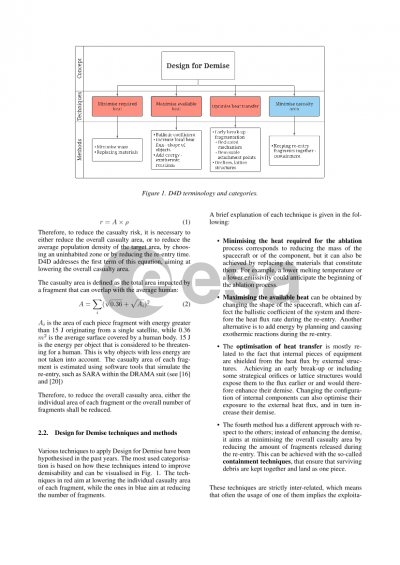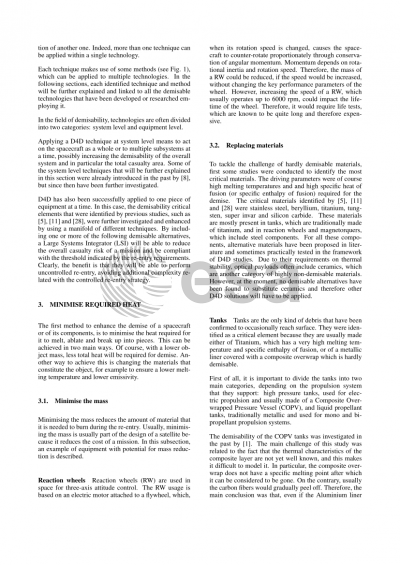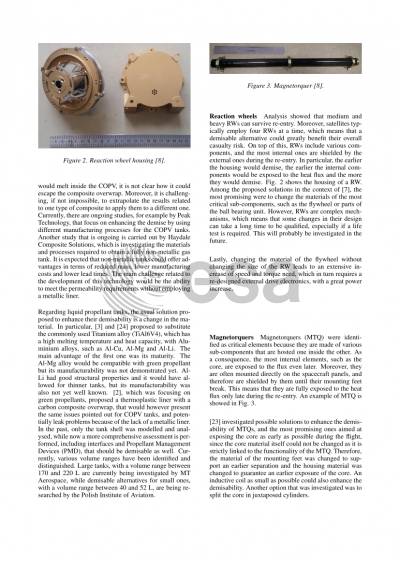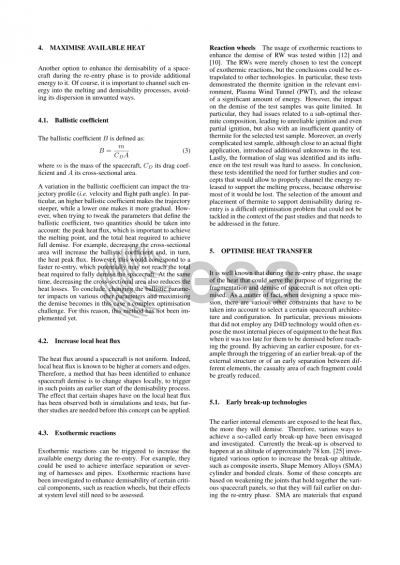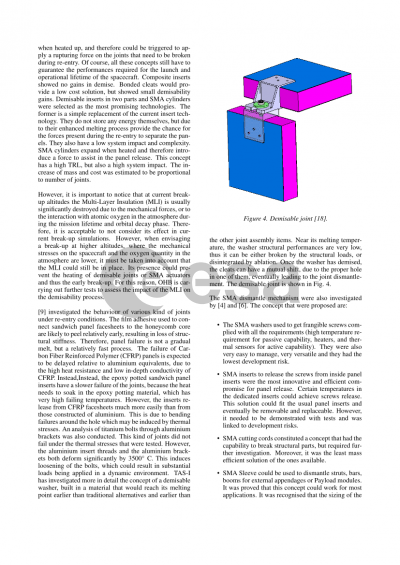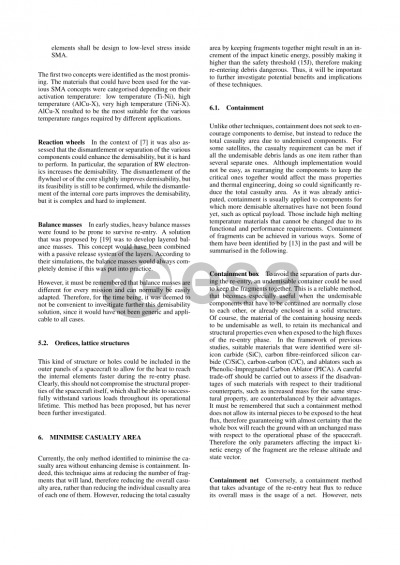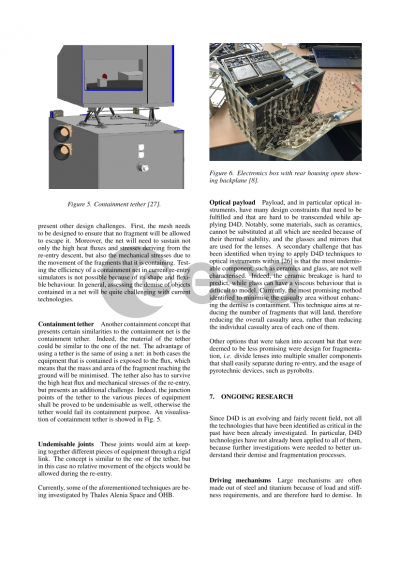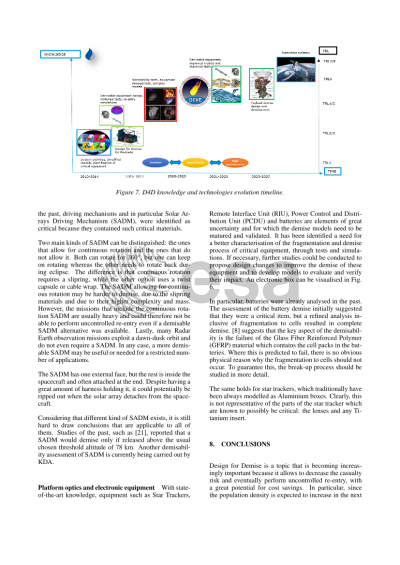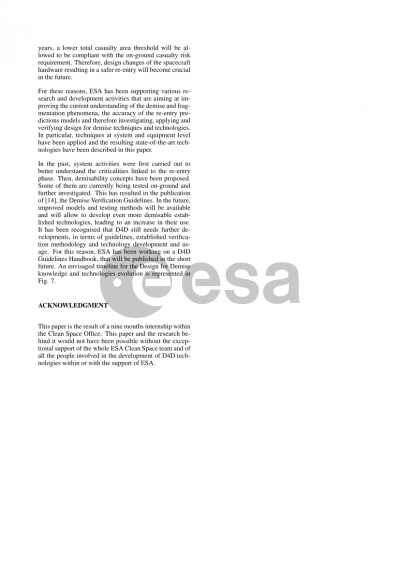Document details

Abstract
Since the European Space Agency started to comply with ISO standards about space debris mitigation, spacecrafts in LEO are required to leave space within 25 years after their end-of-mission and re-enter the Earth’s atmosphere through uncontrolled re-entry, if the on-ground casualty risk is lower than 1 in 10000, or through controlled re-entry, if the risk is higher than the threshold. Having to perform a controlled re-entry has a dramatic impact on the spacecraft design and on the mission cost. For this reason, many mid-large platforms that would not comply with the risk threshold using traditional technologies, have started trying to embed design for demise technology in their spacecraft architecture.
There are various methods to enhance the demise of a satellite or of a piece of equipment, such as minimizing the required heat (e.g. change the material), maximizing the available heat (e.g. increasing the local heat flux by changing the shape), optimizing the heat transfer (e.g. early break-up) and minimizing the casualty area (e.g. keeping the fragments together thanks to some containment technique).
The ESA Clean Space Office has been systematically developing technologies and supporting research about design for demise since the first Space Debris Mitigation guidelines were discussed, which makes it one of the most reliable and competent institution on the topic. This effort in terms of design verification resulted in the publication of DIVE, a document that summarizes the guidelines for analysis and testing the demise of man-made space objects during re-entry. However, a structured and complete summary of existing design for demise techniques is still missing. For this purpose, a Design for Demise Guidelines Handbook is currently under development. The content of this paper has been elaborated in the framework and with the same scope of the Handbook.
The aim of this paper is to provide a broad overview about the state-of-the-art design for demise technologies, starting from a system level point of view, to then dive into the analysis of critical equipment (e.g. tanks, magnetorquers, reaction wheels, batteries, solar arrays driving mechanism, optical payload). Lesson learnt from studies of the past will be highlighted, as well as proposed technologies that should be further investigated in the future.
Preview

